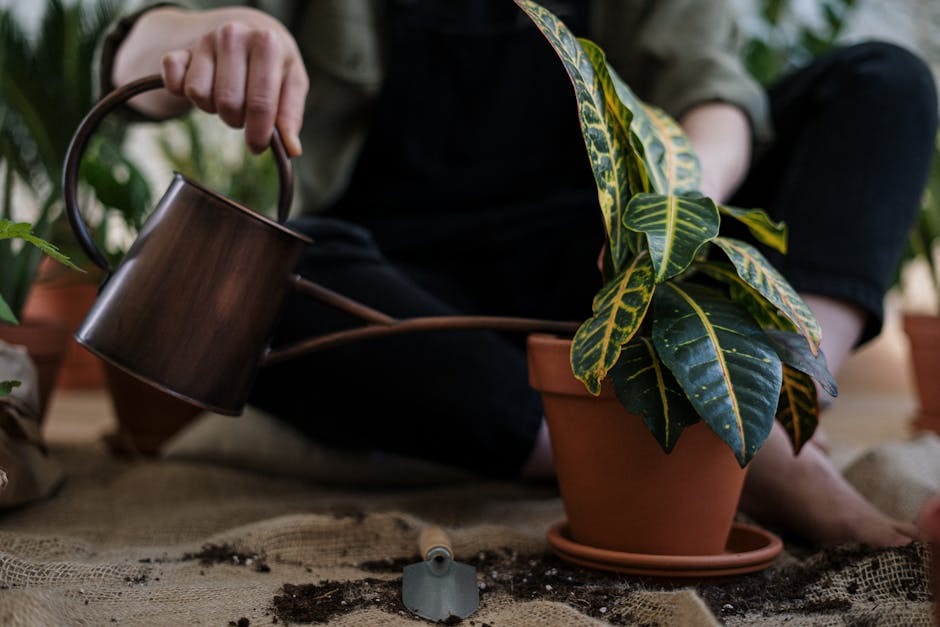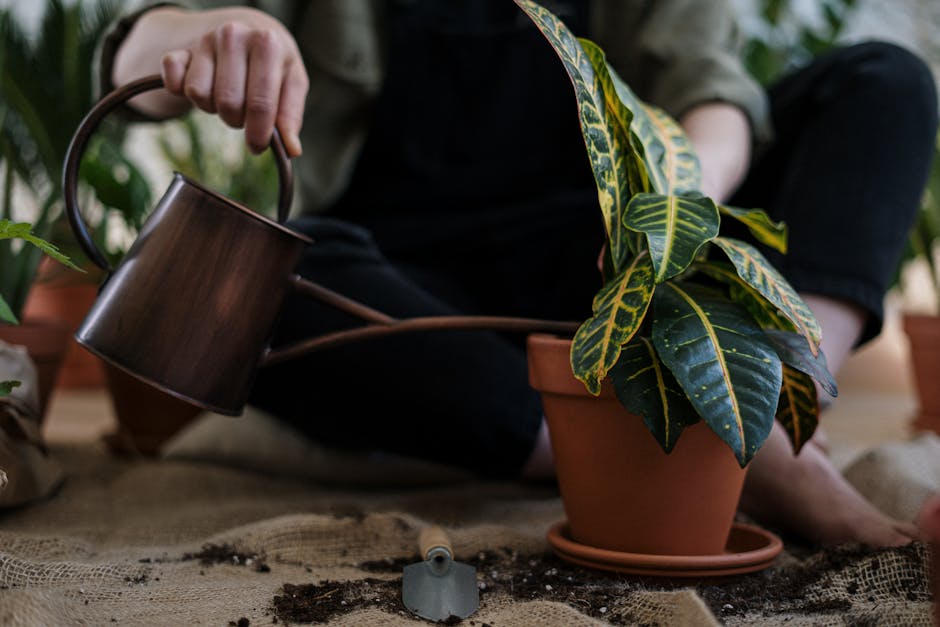Mastering Snake Plant Watering Techniques for Healthy Growth

Snake plants, also known as Sansevieria or Mother-in-Law’s Tongue, are a popular choice for indoor and outdoor gardening due to their hardy nature and striking appearance. However, to ensure their optimal growth and health, it’s crucial to master the art of watering them correctly.
Watering snake plants is a delicate balance. These plants are native to West Africa’s tropical rainforests, where they’ve adapted to survive in conditions many other plants would find challenging. They’re drought-tolerant and can thrive in low-light conditions, making them a favorite among busy plant owners or those without a green thumb. However, this doesn’t mean they can be entirely neglected, especially when it comes to watering.
The first thing to remember is that snake plants prefer to be kept on the drier side. Overwatering is a common mistake that can lead to root rot, a condition that can quickly kill your plant. Instead of sticking to a strict watering schedule, it’s better to check the soil’s moisture level. If the top 2-3 inches of soil are dry, it’s time to water your snake plant.
When watering, it’s essential to do so thoroughly. Water should be poured slowly onto the soil until it starts to drain out from the bottom of the pot. This ensures that the water reaches the plant’s roots, providing the necessary hydration. However, avoid letting the plant sit in standing water, as this can also lead to root rot. After watering, empty the drainage tray immediately.
The amount of water your snake plant needs can also depend on the time of year. During the warmer months, your snake plant will be in its active growth phase and will require more frequent watering, perhaps once a week or once every two weeks. In contrast, during the cooler months, when the plant’s growth slows down, watering can be reduced to once a month or less.
The type of water used can also impact your snake plant’s health. While tap water is often suitable, some plants may react negatively to the chemicals commonly found in it, such as chlorine. If you notice your snake plant’s leaves turning yellow or brown, try switching to distilled or filtered water.
Temperature and humidity also play a role in your snake plant’s watering needs. Snake plants prefer warmer temperatures and lower humidity, similar to their native environment. If your home is particularly dry, consider misting the leaves lightly to increase humidity, but be careful not to overdo it.
Lastly, the type of pot and soil you use can significantly affect your watering technique. Snake plants do well in well-draining soil and pots with drainage holes. This allows excess water to escape, preventing water-logging and root rot.
In conclusion, while snake plants are relatively low-maintenance, understanding their watering needs is key to ensuring their health and longevity. By paying attention to the soil’s moisture level, adjusting watering frequency according to the season, using the right type of water, and considering the plant’s temperature and humidity preferences, you can master the art of watering your snake plant for optimal growth. Remember, when it comes to watering snake plants, less is often more.
Innovative Watering Strategies for Optimal Snake Plant Development
Snake plants, also known as Sansevieria or Mother-in-Law’s Tongue, are a popular choice for indoor and outdoor gardening due to their hardy nature and striking appearance. However, despite their reputation for being low-maintenance, achieving optimal growth for your snake plant requires a bit of knowledge and finesse, particularly when it comes to watering.
Watering a snake plant is not as straightforward as it might seem. These plants are native to West Africa, where they thrive in arid conditions. This means they are adapted to survive with less water than other houseplants. Overwatering can lead to root rot, a common issue that can be fatal for your snake plant. Therefore, it’s crucial to adopt innovative watering strategies to ensure your snake plant’s optimal development.
One such strategy is the ‘soak and dry’ method. This technique involves thoroughly watering the plant and then allowing the soil to completely dry out before watering again. This mimics the plant’s natural environment, where rainfall is heavy but infrequent. To implement this method, water your snake plant until you see water coming out of the drainage holes at the bottom of the pot. Then, wait until the top two inches of soil are completely dry before watering again. This could take anywhere from a week to a month, depending on the temperature and humidity levels in your home.
Another innovative watering strategy is bottom watering. This method involves placing the pot in a tray of water and allowing the plant to absorb moisture from the bottom up. This can help prevent overwatering and root rot, as the plant will only take up as much water as it needs. To do this, fill a tray or basin with about an inch of water and place your snake plant pot in it. Leave it for about 30 minutes to an hour, or until the top of the soil feels moist. Then, remove the pot from the water and let it drain thoroughly.
It’s also important to consider the type of water you’re using. Snake plants prefer rainwater or distilled water over tap water, as the latter can contain chemicals that may harm the plant. If you only have access to tap water, let it sit out overnight before using it to water your snake plant. This allows harmful chemicals like chlorine to evaporate.
Lastly, remember that the season can affect your snake plant’s watering needs. During the growing season (spring and summer), your snake plant will need more water. Conversely, in the dormant season (fall and winter), you should reduce watering.
In conclusion, while snake plants are indeed hardy and low-maintenance, they still require thoughtful care to thrive. By adopting innovative watering strategies like the ‘soak and dry’ method, bottom watering, using the right type of water, and adjusting watering frequency according to the season, you can ensure your snake plant’s optimal growth. Remember, the key to a healthy snake plant is not just about watering it, but watering it right. Happy gardening!

